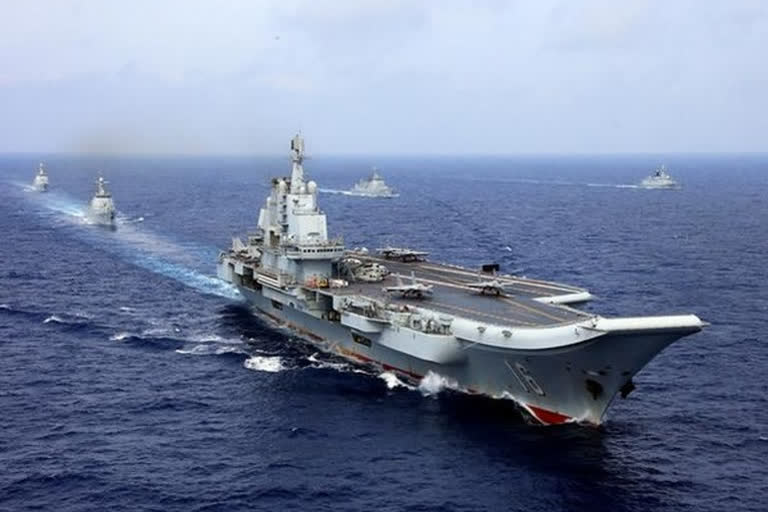New Delhi: Chinese-state owned media on Sunday reacted with apparent glee to the ‘unusual’ incident of a US Navy warship brazenly breaking Indian maritime laws by sailing inside Indian waters without prior notice to Indian authorities, and then publicizing the incident with an official US Navy press release.
On Wednesday, guided-missile destroyer USS John Paul Jones entered Indian waters within 130 nautical miles west of the Lakshadweep Islands in the Arabian Sea.
News and opinion pieces in the state-owned Chinese media have to be vetted by Beijing and are taken as the official Communist Party stand.
Terming India’s maritime claims as “excessive”, a US Navy release said its ship “asserted navigational rights and freedoms… inside India’s exclusive economic zone, without requesting India’s prior consent, consistent with international law.”
An opinion piece in the Chinese government mouthpiece ‘Global Times’ quoted Long Xingchun, president of the Chengdu Institute of World Affairs, who said, “Even though the US has boosted relations with India, the latter still cannot challenge or negate US ‘freedom of navigation in the region, or US national interests.”
The article also ridiculed the Indian government expressing “concern” over the incident that too after two days.
Also Read: Pentagon asserts navigational rights inside India's EEZ without permission
It quoted senior BJP leader and Rajya Sabha MP Subramanian Swamy’s tweet on Saturday that said, "Concern' is the language of those who have chickened. Between China and the US, India is becoming ineligible for anything but a junior partner status just as Japan has been since 1945.”
The article added, “The US has always attempted to maintain its global hegemony. Given the strategic position of the Indian Ocean, the US will not easily discard its hegemony there, nor will it tolerate any country to share the hegemony with it. This will lead to frictions in strategic interests between the two countries.”
Since May 2019, India and China have been engaged in belligerent posturing that has been ongoing.
A border fracas between patrolling soldiers near the Line of Actual Control (LAC) in eastern Ladakh, has now snowballed into a situation where about 100,000 troops face each other near the LAC in an unprecedented militarization in the region.
Strategic Autonomy
India pursues a policy of ‘strategic autonomy’ where national interest is considered much more paramount than relationships and understandings with other countries.
While many strategists had alluded that India’s participation in the ‘Quadrilateral Security Dialogue’ or ‘Quad’, an informal grouping comprising India, US, Australia and Japan, with the central tenet of containing a rising China, had reduced it to a ‘junior partner’ of the US, on Wednesday itself, India’s Chief of Defence Staff (CDS) General Bipin Rawat put things in the right perspective.
Gen Rawat had said, “India’s engagements in the geo-strategic spectrum reflect the fierce reinforcing of the policy of ‘Strategic Autonomy’ by not entering into any stifling military alliance… We have preferred strategic partnerships on equal terms, rather than compromising our autonomy on strategic issues by towing the party line of alliances”.
Interestingly, for the first time perhaps, the CDS also indicated India’s strategic space as extending “from the Persian Gulf in the West to the straits of Malacca in the East, and from the Central Asian Region in the North to near the equator in the South”.
Also Read: Snubbing India’s national laws, US warship enters Indian waters



